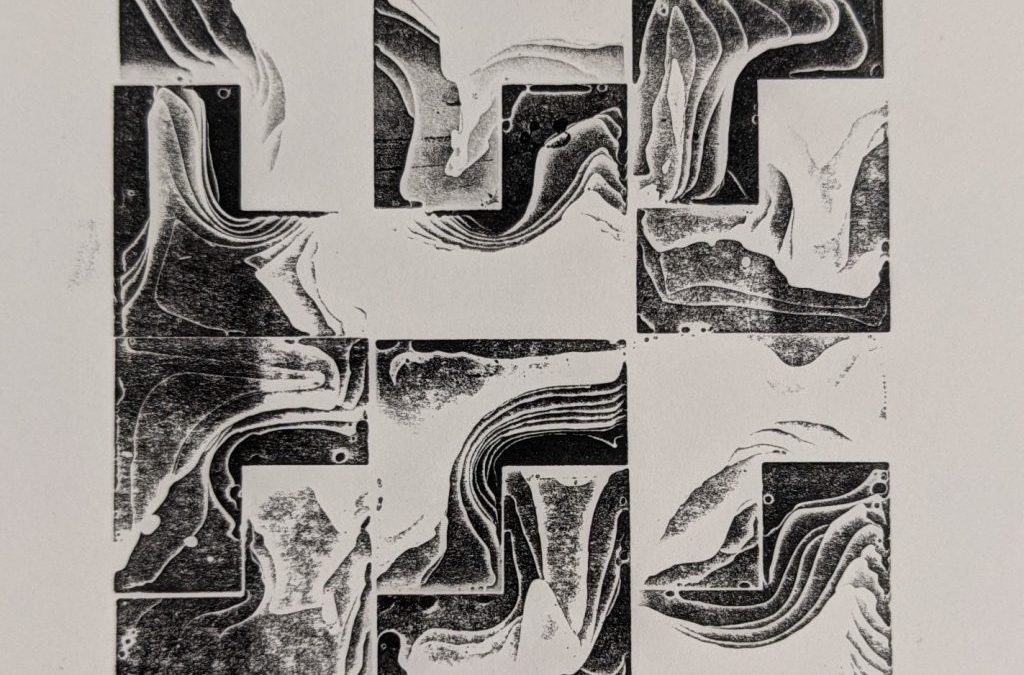While printing a set of blocks for printing I ran into an unexpected problem. The printing of a set of blocks takes around 1.5hours, during which time I was teaching and did not realise the resin in the printing vat had begun to run out. The result was a failed print as with no resin left in the vat the resulting blocks were below type height and the printing surface was imperfect. However on inspection, where the resin had ran out at different rates across the different blocks the resulting surface was covered in various random shapes of different thicknesses. Raising low or damaged wooden blocks up to type height is fairly common in letterpress printing and is achieved by placing sheets of paper below the block until it creates an impression when printed. With some work raising each block individually I was able to create a collection of blocks that print a well defined and one of a kind design.
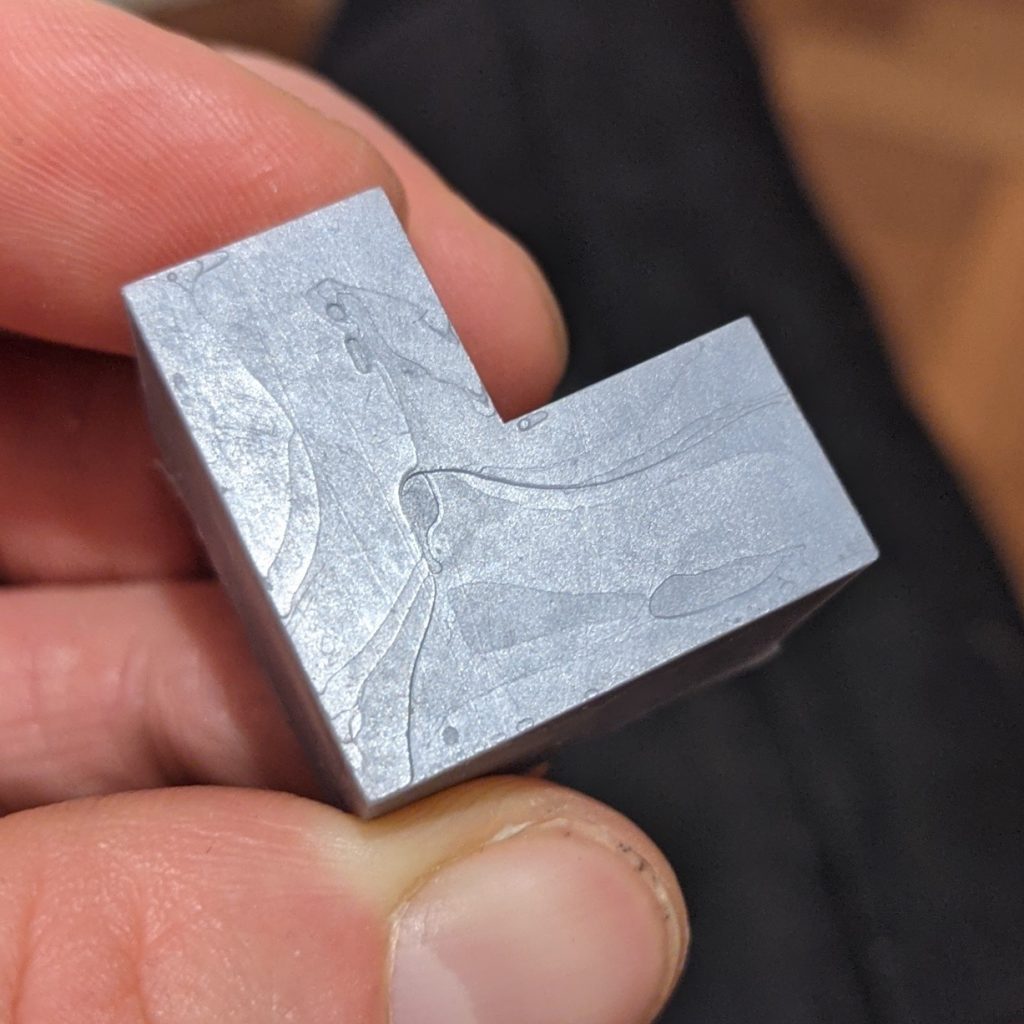
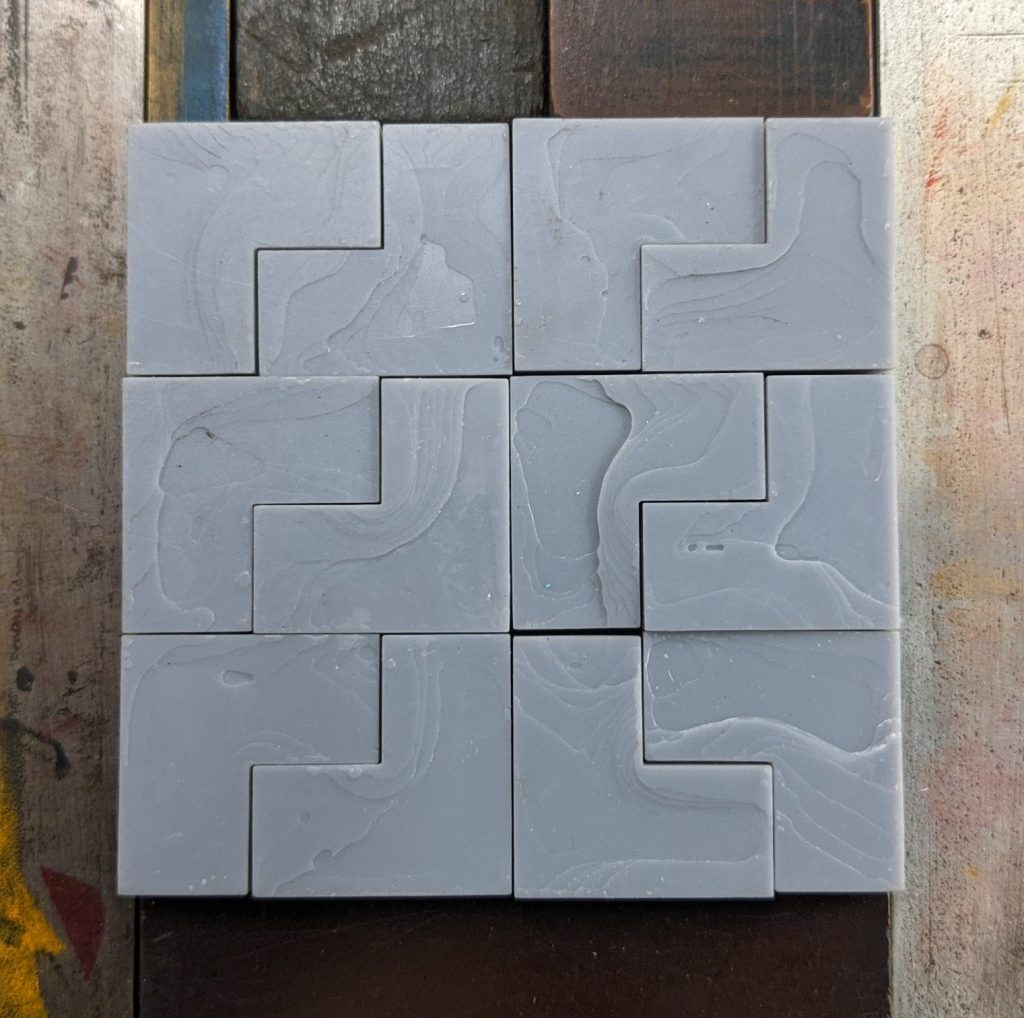
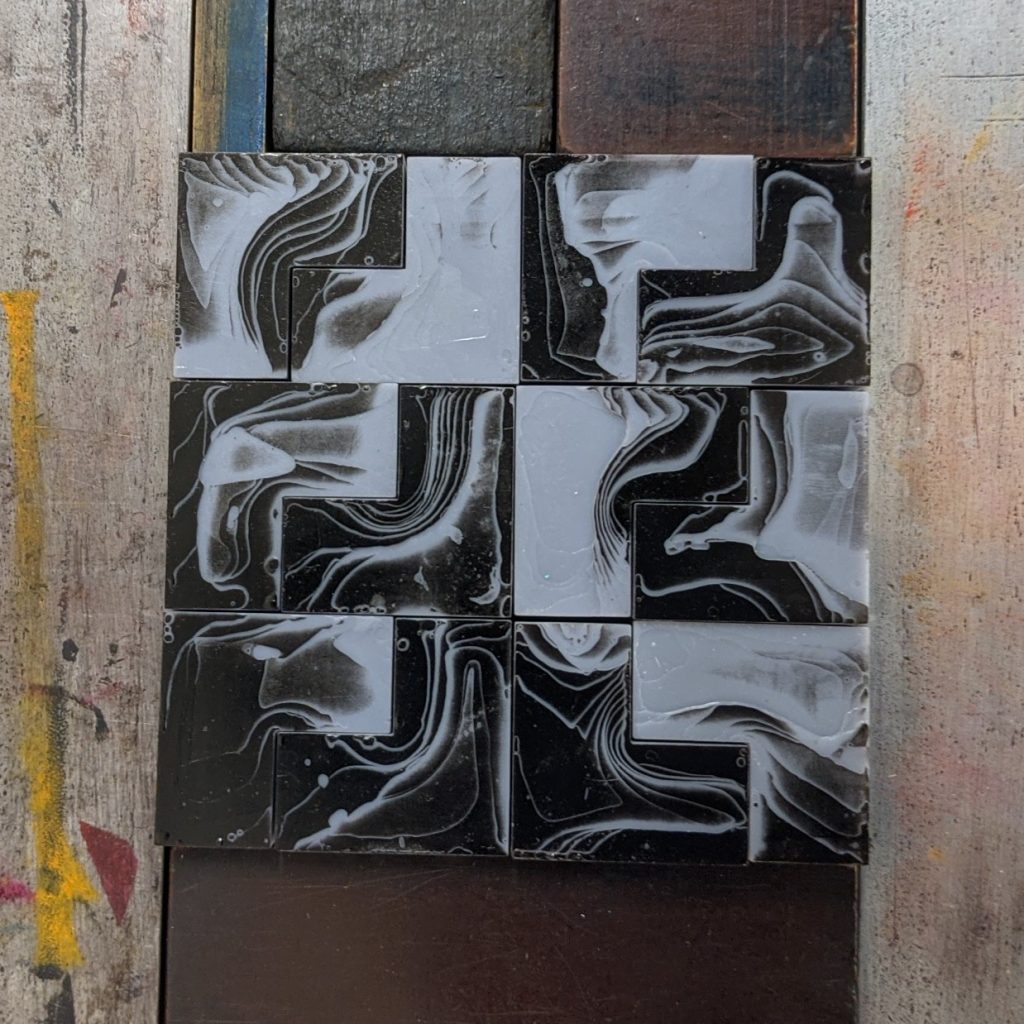
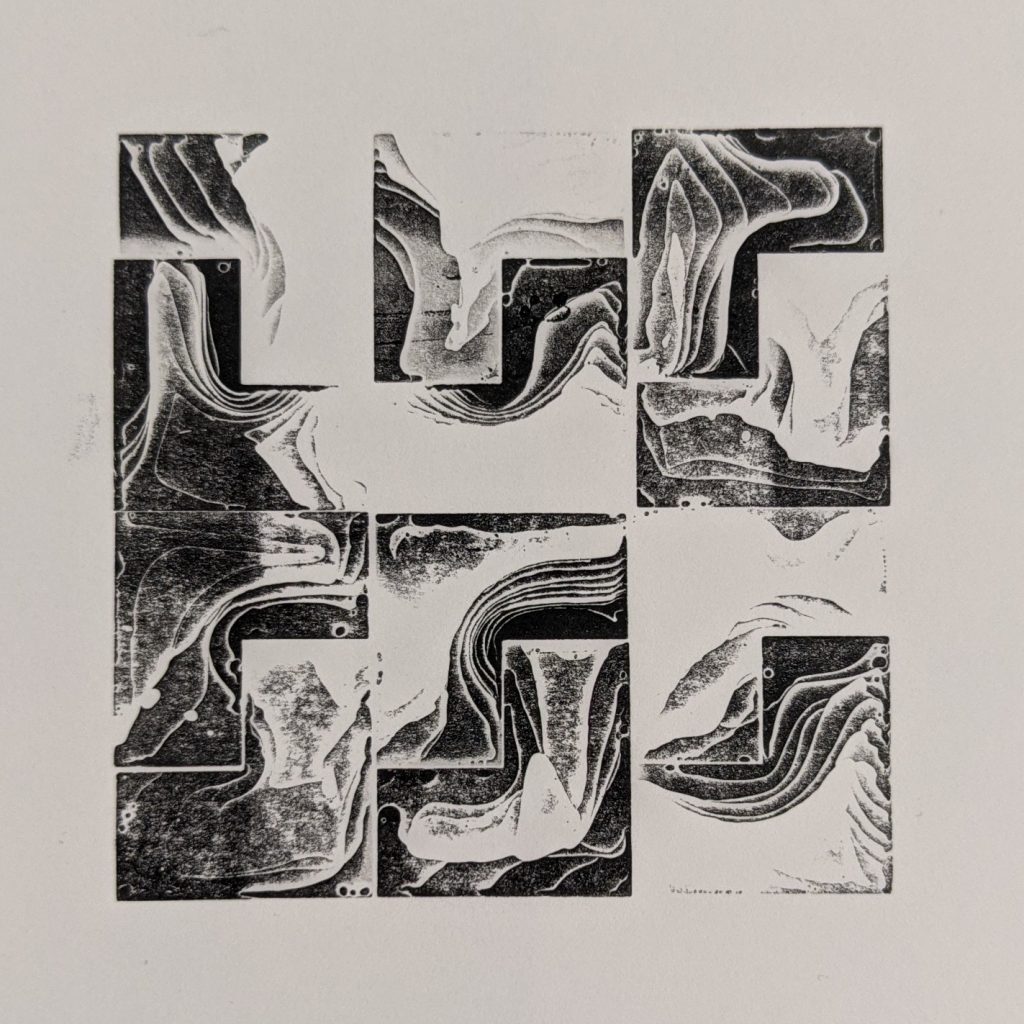
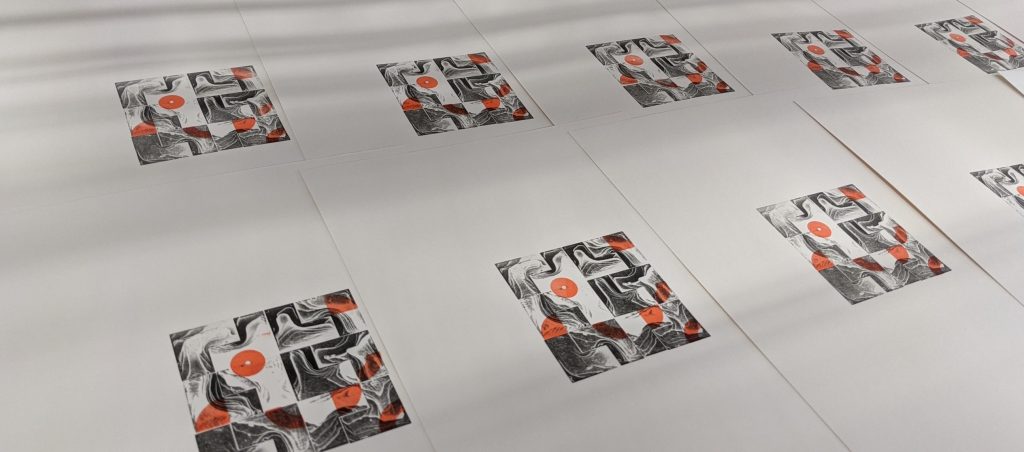
The print the blocks create evoke a similar aesthetic as ordinance survey maps, with elevation lines showing the height of points of interest. Inspired by the exploratory nature of the project as well as the visual similarities to maps I created a series of abstract prints around the theme of wayfinding.
While not directly related to the core themes of my project I found it a useful detour as I continued to explore the possibilities that surround the 3d printing process. It is interesting to think of the possibilities of manipulating this process during printing to achieve different designs so that the printing of the block becomes a transformative process that imbues the pieces with a trace of it’s means of creation, rather than it being a direct physical copy of the digital file.
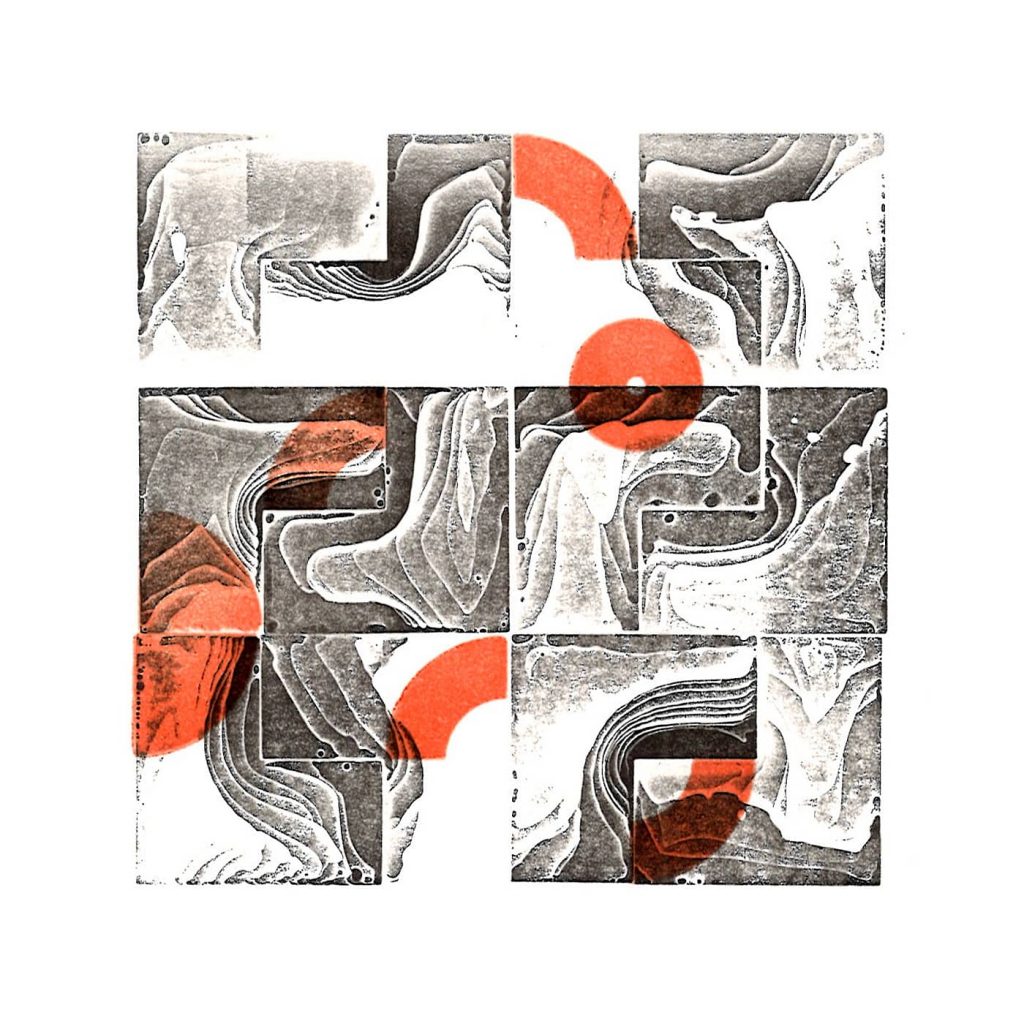
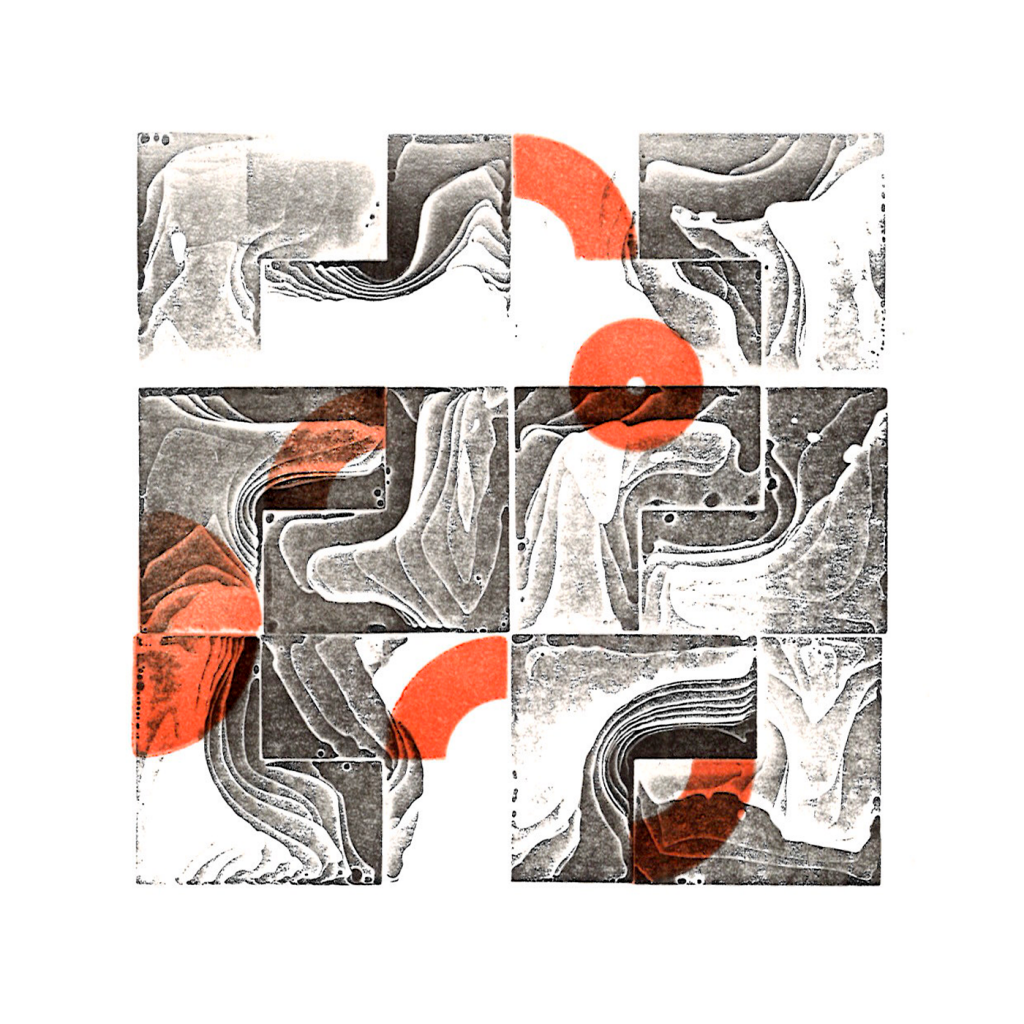
While discussing these pieces with Katherine Anteney she mentioned it was reminiscent of a physical process used in the creation of chaos blocks, lead blocks with random patterns on the surface that were used in the letterpress printing process to create prints that could not be duplicated by another printer. Molten lead was dripped into a mould and allowed to cool slightly before being fully filled. So my chaos blocks have been created in a similar way, but in reverse. The technique has been researched and explained on the St Brides Foundation blog as “a method of producing and printing complex ‘organic’ images from the raw material of letterpress itself – molten type metal. John Franklin Earhart was the inventor of this process used for a short period in the late 19th century which relied upon the unpredictable and random qualities of chaos.”(2020)
References
- ST BRIDE FOUNDATION, 2020. Chaos type [viewed May 19, 2021]. Available from: https://stbridefoundation.wordpress.com/2020/06/04/chaos-type/
